Abstract
Modification of the Pasquill atmospheric diffusion equations for estimating viable microbial airborne cell concentrations downwind form a continuous point source is presented. A graphical method is given to estimate the ground level cell concentration given (i) microbial death rate, (ii) mean wind speed, (iii) atmospheric stability class, (iv) downwind sample distance from the source, and (v) source height.
Full text
PDF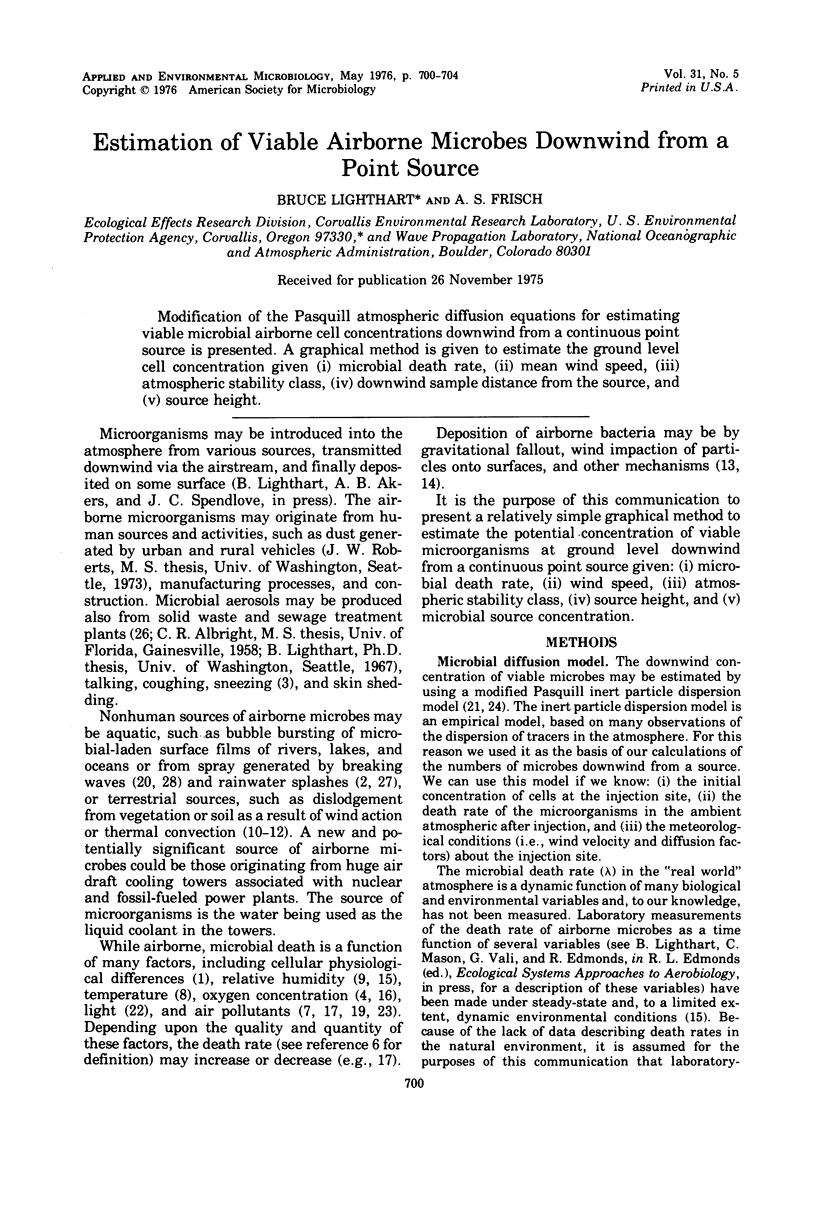
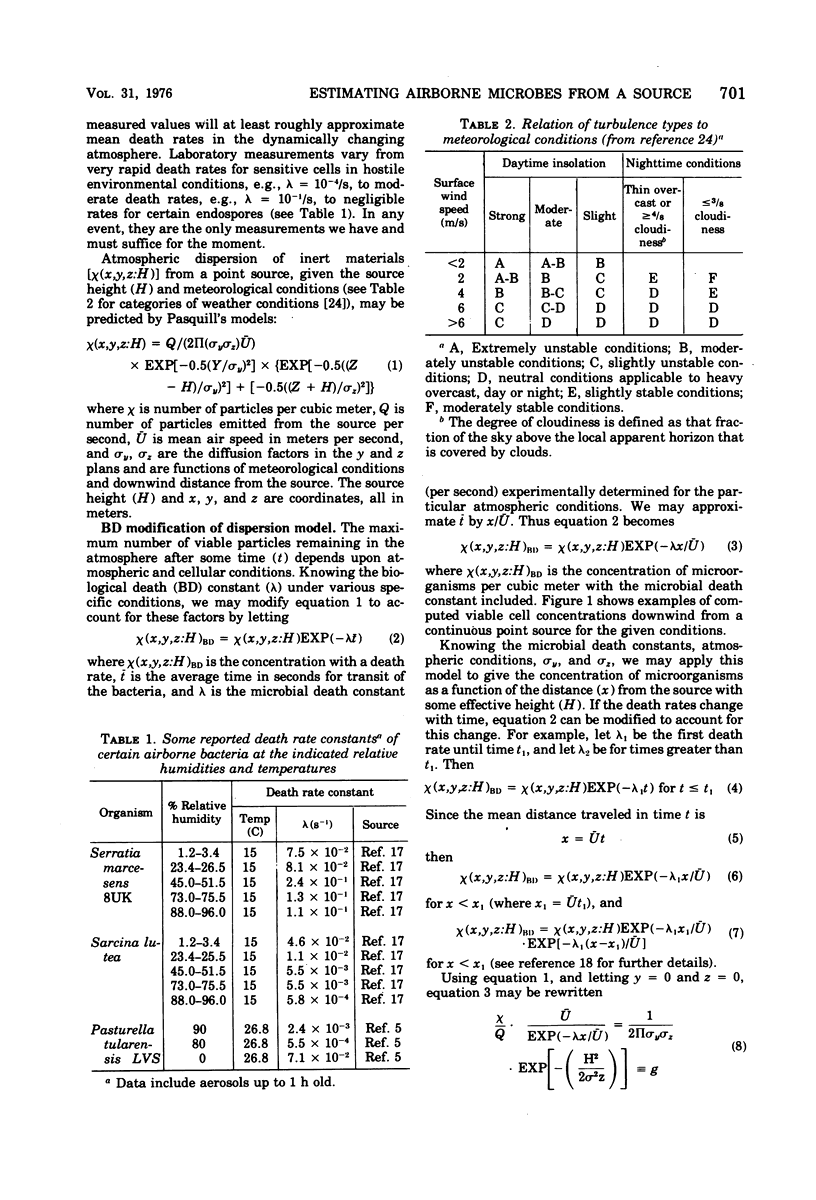
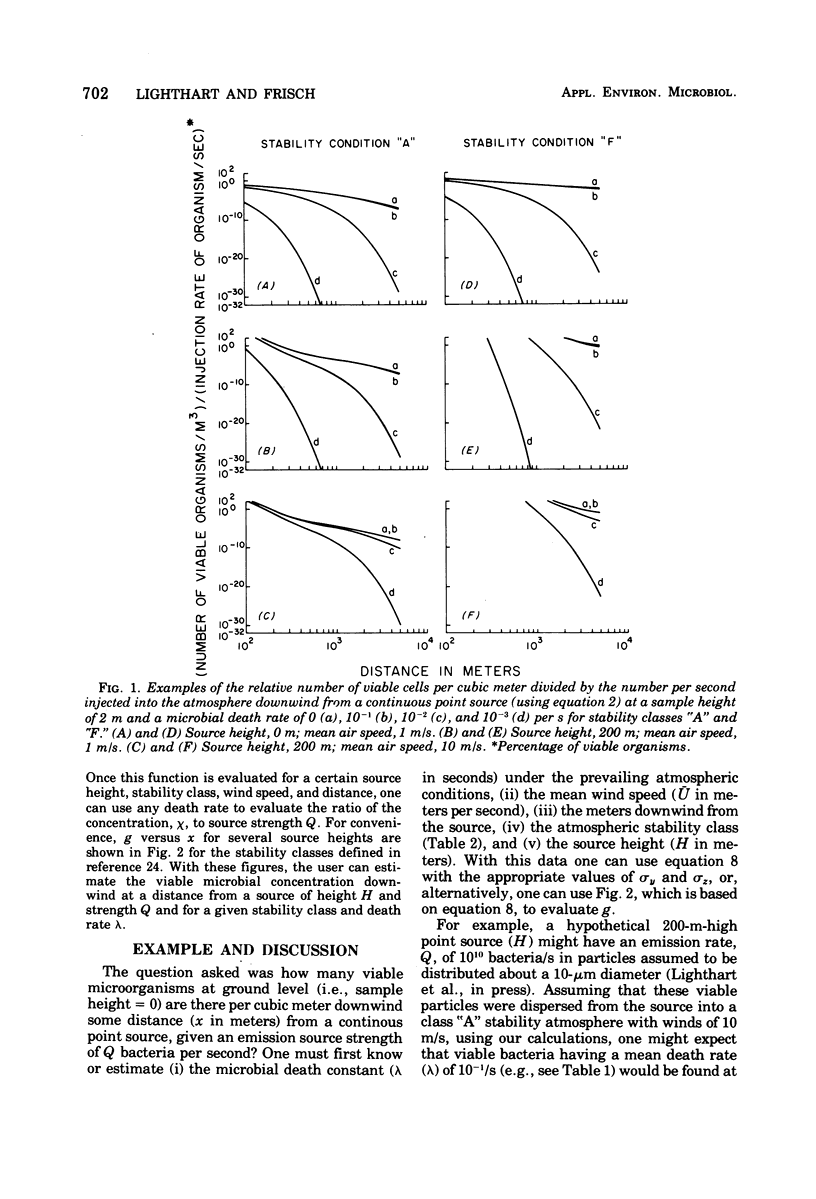
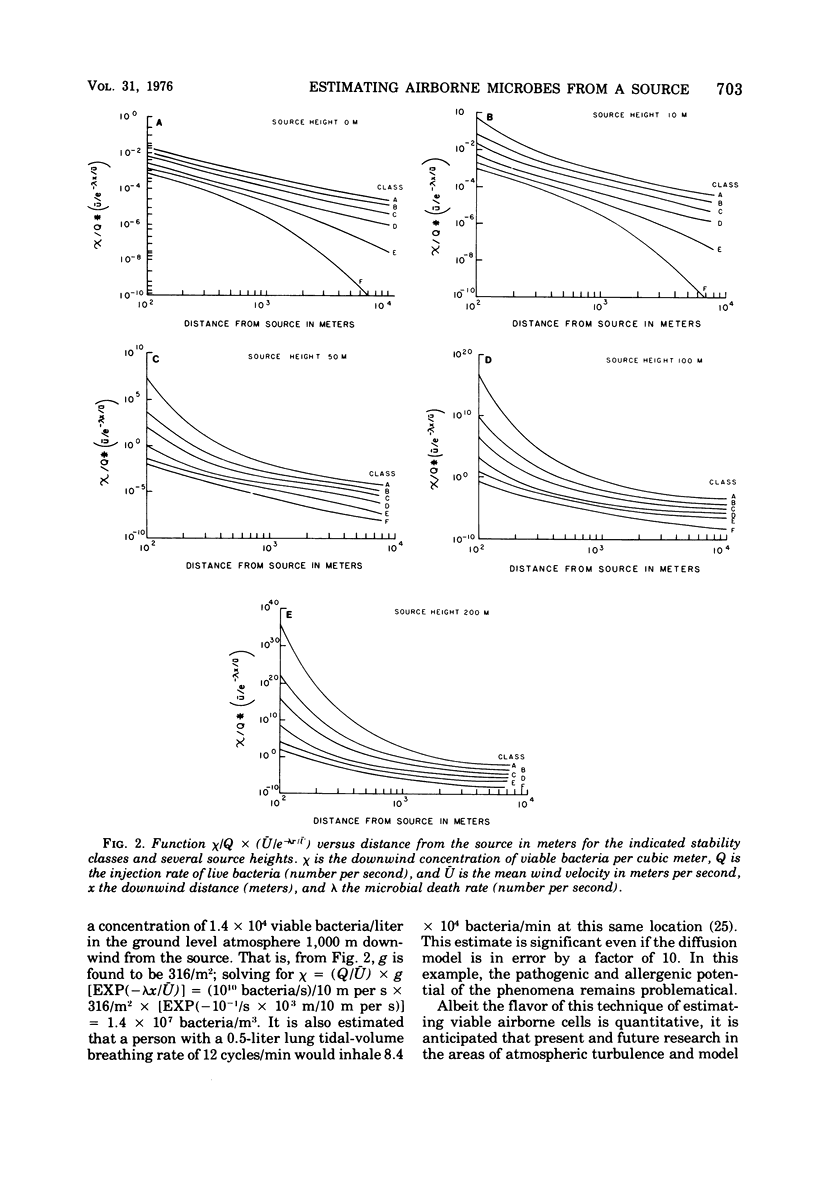
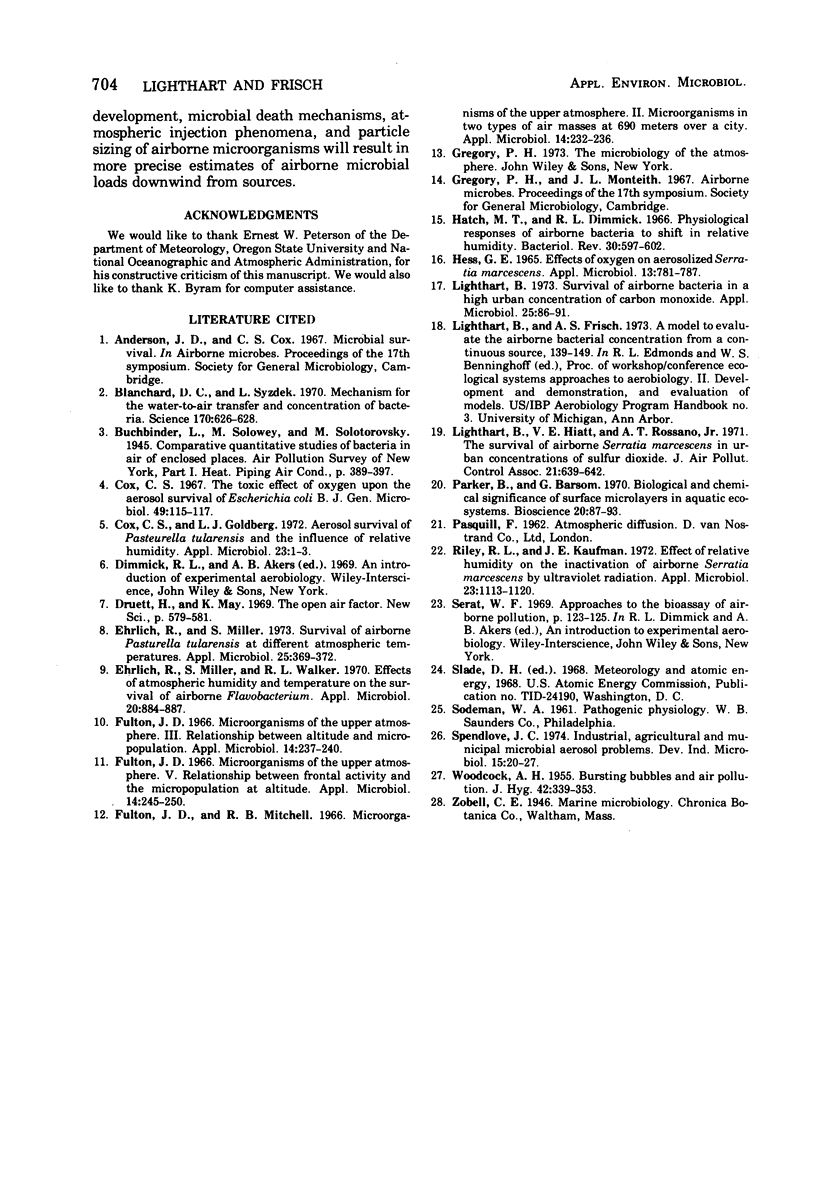
Selected References
These references are in PubMed. This may not be the complete list of references from this article.
- Blanchard D. C., Syzdek L. Mechanism for the water-to-air transfer and concentration of bacteria. Science. 1970 Nov 6;170(3958):626–628. doi: 10.1126/science.170.3958.626. [DOI] [PubMed] [Google Scholar]
- Cox C. S., Baldwin F. The toxic effect of oxygen upon the aerosol survival of Escherichia coli B. J Gen Microbiol. 1967 Oct;49(1):115–117. doi: 10.1099/00221287-49-1-115. [DOI] [PubMed] [Google Scholar]
- Cox C. S., Goldberg L. J. Aerosol survival of Pasteurella tularensis and the influence of relative humidity. Appl Microbiol. 1972 Jan;23(1):1–3. doi: 10.1128/am.23.1.1-3.1972. [DOI] [PMC free article] [PubMed] [Google Scholar]
- Ehrlich R., Miller S. Survival of airborne Pasteurella tularensis at different atmospheric temperatures. Appl Microbiol. 1973 Mar;25(3):369–372. doi: 10.1128/am.25.3.369-372.1973. [DOI] [PMC free article] [PubMed] [Google Scholar]
- Ehrlich R., Miller S., Walker R. L. Effects of atmospheric humidity and temperature on the survival of airborne Flavobacterium. Appl Microbiol. 1970 Dec;20(6):884–887. doi: 10.1128/am.20.6.884-887.1970. [DOI] [PMC free article] [PubMed] [Google Scholar]
- Fulton J. D. Microorganisms of the upper atmosphere. 3. Relationship between altitude and micropopulation. Appl Microbiol. 1966 Mar;14(2):237–240. doi: 10.1128/am.14.2.237-240.1966. [DOI] [PMC free article] [PubMed] [Google Scholar]
- Fulton J. D. Microorganisms of the upper atmosphere. V. Relationship between frontal activity and the micropopulation at altitude. Appl Microbiol. 1966 Mar;14(2):245–250. doi: 10.1128/am.14.2.245-250.1966. [DOI] [PMC free article] [PubMed] [Google Scholar]
- Fulton J. D., Mitchell R. B. Microorganisms of the upper atmosphere. II. Microorganisms in two types of air masses at 690 meters over a city. Appl Microbiol. 1966 Mar;14(2):232–236. doi: 10.1128/am.14.2.232-236.1966. [DOI] [PMC free article] [PubMed] [Google Scholar]
- Hatch M. T., Dimmick R. L. Physiological responses of airborne bacteria to shifts in relative humidity. Bacteriol Rev. 1966 Sep;30(3):597–603. doi: 10.1128/br.30.3.597-603.1966. [DOI] [PMC free article] [PubMed] [Google Scholar]
- Hess G. E. Effects of oxygen on aerosolized Serratia marcescens. Appl Microbiol. 1965 Sep;13(5):781–787. doi: 10.1128/am.13.5.781-787.1965. [DOI] [PMC free article] [PubMed] [Google Scholar]
- Lighthart B., Hiatt V. E., Rossano A. T., Jr The survival of airborne Serratia marcescens in urban concentrations of sulfur dioxide. J Air Pollut Control Assoc. 1971 Oct;21(10):639–642. doi: 10.1080/00022470.1971.10469580. [DOI] [PubMed] [Google Scholar]
- Lighthart B. Survival of airborne bacteria in a high urban concentration of carbon monoxide. Appl Microbiol. 1973 Jan;25(1):86–91. doi: 10.1128/am.25.1.86-91.1973. [DOI] [PMC free article] [PubMed] [Google Scholar]
- Riley R. L., Kaufman J. E. Effect of relative humidity on the inactivation of airborne Serratia marcescens by ultraviolet radiation. Appl Microbiol. 1972 Jun;23(6):1113–1120. doi: 10.1128/am.23.6.1113-1120.1972. [DOI] [PMC free article] [PubMed] [Google Scholar]


